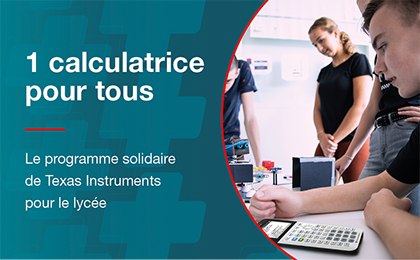Unit 1
DownloadTélécharger
Actions
Vote :
ScreenshotAperçu

Informations
Catégorie :Category: nCreator TI-Nspire
Auteur Author: KTS.A7
Type : Classeur 3.0.1
Page(s) : 1
Taille Size: 2.37 Ko KB
Mis en ligne Uploaded: 12/02/2025 - 12:55:30
Uploadeur Uploader: KTS.A7 (Profil)
Téléchargements Downloads: 2
Visibilité Visibility: Archive publique
Shortlink : http://ti-pla.net/a4502084
Type : Classeur 3.0.1
Page(s) : 1
Taille Size: 2.37 Ko KB
Mis en ligne Uploaded: 12/02/2025 - 12:55:30
Uploadeur Uploader: KTS.A7 (Profil)
Téléchargements Downloads: 2
Visibilité Visibility: Archive publique
Shortlink : http://ti-pla.net/a4502084
Description
Fichier Nspire généré sur TI-Planet.org.
Compatible OS 3.0 et ultérieurs.
<<
Introduction to Design ErgonomicsThe application of scientific information concerning the relationship of human beings to design products AnthropometricsThe study of human body features such as mass, height, and volume, and is used in the design of consumer goods Two types of Measurements Static (fixed) Dynamic (moving) PercentilesRefers to 100 equal groups to which a sample population can be divided according to the distribution of values of a particular variable. 3 Types of Ergonomics Physical Cognitive Organizational Physical ErgonomicsOften deals with the related matters of posture worksite development, and operating layout. Cognitive ErgonomicsRelated to mental processes such as perception, memory, reasoning, and motor responses. Organizational ergonomicsinclude subjects such as communication, work hours, and management. In a workplace environment. Disadvantages of Collecting Anthropometric Data People have different body shapes Obtaining static data is very straight forward Users do not carry the same task the same way every time Examples of Dynamic Data Running Shoes Weights Psychological ErgonomicsThe study of human factors affecting mental processes and behavior in design. Psychological Factor DataHuman factor data related to physical characteristics to optimize the users safety, health, comfort and performance. Adjustabilitycertain features of equipment or facilities that are designed so they can be altered by the user from the 5th-95th percentiles Reacha 3 dimensional space within which you carry out physical work activities when you are in a fixed location. Clearancethe minimum distance required to enable the user group into an area Design for Adjustabilitywhen a decision is made within a design of the product to accommodate different user group sizes Physiological Factor Datahuman factor data related to physical characteristics used to optimize the user safety, health, comfort, and performance Human Information Processing Steps (in order) Sensory Central processes (Relay) Motor processes Output ComfortHow pleasing the product feels Physiological FactorsPhysical and mental characteristics of a person that affect their interaction with a design. Physiological Factor DataHuman factor data related to physical characteristics to optimize the users safety, health, comfort and performance. Made with nCreator - tiplanet.org
>>
Compatible OS 3.0 et ultérieurs.
<<
Introduction to Design ErgonomicsThe application of scientific information concerning the relationship of human beings to design products AnthropometricsThe study of human body features such as mass, height, and volume, and is used in the design of consumer goods Two types of Measurements Static (fixed) Dynamic (moving) PercentilesRefers to 100 equal groups to which a sample population can be divided according to the distribution of values of a particular variable. 3 Types of Ergonomics Physical Cognitive Organizational Physical ErgonomicsOften deals with the related matters of posture worksite development, and operating layout. Cognitive ErgonomicsRelated to mental processes such as perception, memory, reasoning, and motor responses. Organizational ergonomicsinclude subjects such as communication, work hours, and management. In a workplace environment. Disadvantages of Collecting Anthropometric Data People have different body shapes Obtaining static data is very straight forward Users do not carry the same task the same way every time Examples of Dynamic Data Running Shoes Weights Psychological ErgonomicsThe study of human factors affecting mental processes and behavior in design. Psychological Factor DataHuman factor data related to physical characteristics to optimize the users safety, health, comfort and performance. Adjustabilitycertain features of equipment or facilities that are designed so they can be altered by the user from the 5th-95th percentiles Reacha 3 dimensional space within which you carry out physical work activities when you are in a fixed location. Clearancethe minimum distance required to enable the user group into an area Design for Adjustabilitywhen a decision is made within a design of the product to accommodate different user group sizes Physiological Factor Datahuman factor data related to physical characteristics used to optimize the user safety, health, comfort, and performance Human Information Processing Steps (in order) Sensory Central processes (Relay) Motor processes Output ComfortHow pleasing the product feels Physiological FactorsPhysical and mental characteristics of a person that affect their interaction with a design. Physiological Factor DataHuman factor data related to physical characteristics to optimize the users safety, health, comfort and performance. Made with nCreator - tiplanet.org
>>













